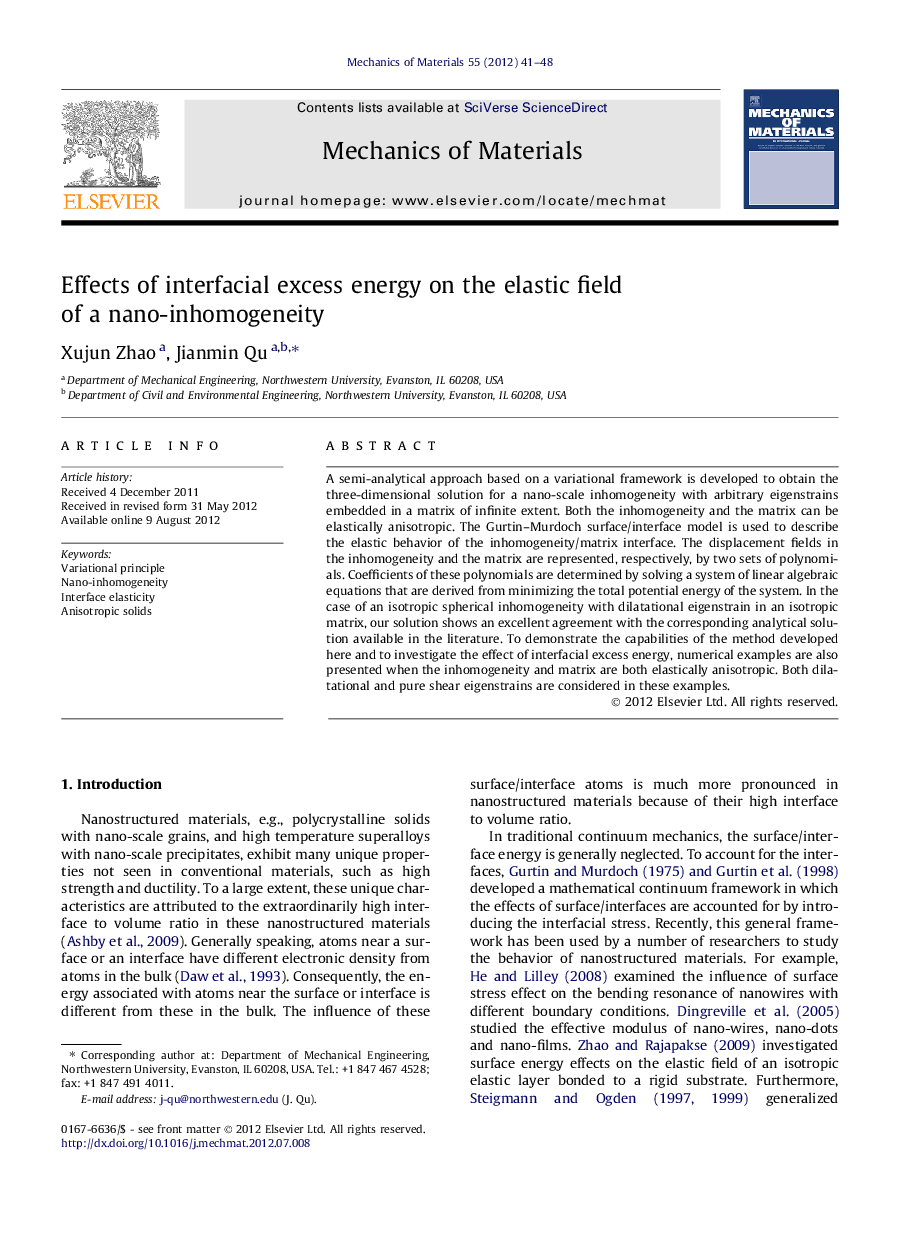| Article ID | Journal | Published Year | Pages | File Type |
|---|---|---|---|---|
| 797611 | Mechanics of Materials | 2012 | 8 Pages |
A semi-analytical approach based on a variational framework is developed to obtain the three-dimensional solution for a nano-scale inhomogeneity with arbitrary eigenstrains embedded in a matrix of infinite extent. Both the inhomogeneity and the matrix can be elastically anisotropic. The Gurtin–Murdoch surface/interface model is used to describe the elastic behavior of the inhomogeneity/matrix interface. The displacement fields in the inhomogeneity and the matrix are represented, respectively, by two sets of polynomials. Coefficients of these polynomials are determined by solving a system of linear algebraic equations that are derived from minimizing the total potential energy of the system. In the case of an isotropic spherical inhomogeneity with dilatational eigenstrain in an isotropic matrix, our solution shows an excellent agreement with the corresponding analytical solution available in the literature. To demonstrate the capabilities of the method developed here and to investigate the effect of interfacial excess energy, numerical examples are also presented when the inhomogeneity and matrix are both elastically anisotropic. Both dilatational and pure shear eigenstrains are considered in these examples.
► A semi-analytical approach was devised to solve the nano-inhomogeneity problem. ► The deformation dependent interfacial excess energy was considered. ► We discussed the influences of material anisotropy and interfacial energy effect. ► The influences of material anisotropy and interfacial excess energy are studied.
